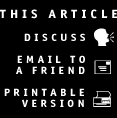 |
|
|
ISOC in Internet Governance By Don Heath heath@isoc.org As we begin the final calendar year of the 1900s, it's difficult to not marvel at the extraordinary changes mankind has experienced during the past hundred years. We began this century riding horse-drawn buggies. Traveling a distance of 20 miles was considered a journey. Letter writing was an art form. Today, in many cultures, a 20-mile daily commute to the office is commonplace, letter writing is rare, and millions of bits of information zip through phone lines in a second. At the turn of the century, with far less information coming in, it was probably a lot easier to remember where you left your buggy whip. Today, as cultural anthropologist Jennifer James once said, we get more information listening to the radio in our cars on the way to work than the average turn-of-the-century farmer got in one year tilling the fields. So it's no surprise that most of us can't remember where we left our car keys last night. Nowhere has the rate of change this century been more apparent than in the field of networking, specifically with regard to the Internet. I venture to guess that the last decade of the 1900s will go down in history as the decade of the Internet. While the Internet was emerging steadily during the nearly last third of the 1900s, it really has come to the fore only in its past decade. And let's face it: the past three years have shown the most incredible growth and change yet. We are only now beginning to understand some of the basic issues associated with governance of the global phenomenon of the Internet. The Internet Society has played a major role in attempts to establish sound mechanisms for effective self-regulation. It's a painful and sometimes ghastly process, but the outcomes are vital to the continued health and growth of the Internet. If the Internet is ever to reach its fullest potential, it will need effective, practical, and reliable forms of self-governance. During the past three years we've experienced the institutionalization and internationalization of one of the more basic aspects of Internet administration--that is, the formalization and international recognition of what had been the Internet Assigned Numbers Authority (IANA) as a legally constituted entity. It was not an easy process, but we believe the work has laid a foundation upon which further expansion may be realized--hopefully in a less cumbersome fashion. The development of a new, internationally recognized structure for administering the domain name and addressing system--the core of the Internet's functionality--involved a wide range of organizations, individuals, and interests, including the International Ad Hoc Committee (IAHC), the Council of Registrars (CORE), the Policy Advisory Body (PAB), the Policy Oversight Committee (POC), the U.S. government, and the World Intellectual Property Organization (WIPO), to name a few. Internet Society members participated in virtually all of the associated activities, and although disparate efforts were sometimes at odds, over time and with common forums to discuss the various perspectives, convergence resulted. Only through open debate and discussion can we expect to arrive at what the Internet Engineering Task Force (IETF) so eloquently refers to as rough consensus, a term derived from the rigorous process of Internet standards development. Rough consensus doesn't mean unanimity. Rather, it means widespread agreement on the basic tenets or principles underlying the resolution of issues within the challenge presented. As we saw in the overly complex process that resulted in a new enterprise to take over the functions of IANA, the process does not always run smooth, it rarely takes a direct path, views are naturally diverse, resolutions are invariably thwarted, and not everyone will be pleased with the end results. The active involvement of a diverse constituency is critical to obtaining the best results and to achieving fair representation of all Internet stakeholders. At the end of 1998, the Internet Society had almost 7,000 individual members. It has never made an orchestrated effort to recruit members, and as a result, even though the membership is diverse, the numbers do not adequately reflect the popularity of the Internet. To continue the society's historical legacy of influence and development of the Internet, it is important to substantially increase membership. The number of Internet Society chapters throughout the world has grown, and it is there that the real involvement of members in the work of the society can best be accomplished. It is within those chapters that issues must be discussed, and it is through chapters that ISOC can develop a clear, international position. The principles upon which the Internet Society bases its goals, objectives, programs, and initiatives are sound. The mission statement is clear. Together they form an excellent foundation to continue the beneficial evolution of the Internet. The Internet Society should be a natural rallying point for those interested in the welfare of the Internet. As I said, we have just begun our understanding of the process of creating governance mechanisms and organizations. The Internet Society has an important role to play in future governance activities. Let's be prepared by being actively involved. Happy 1999! |

